 During World War II, there were hundreds of thousands, if not millions, of bombs dropped across Europe. There is no way to know where they were dropped, or if they actually exploded, or worse yet, if they are still lurking beneath the surface waiting to detonate. Princess Diana was a champion of a similar cause, but she was concerned about landmines…just as deadly, but a different deployment. Both concerns are real, and both situations are deadly. One German bomb specialist said that the problem will haunt Europe for centuries, saying, “There will still be bombs 200 years from now.”
During World War II, there were hundreds of thousands, if not millions, of bombs dropped across Europe. There is no way to know where they were dropped, or if they actually exploded, or worse yet, if they are still lurking beneath the surface waiting to detonate. Princess Diana was a champion of a similar cause, but she was concerned about landmines…just as deadly, but a different deployment. Both concerns are real, and both situations are deadly. One German bomb specialist said that the problem will haunt Europe for centuries, saying, “There will still be bombs 200 years from now.”
One such example is that of the German town of Limberg, whose residents woke up to a startling sight on the morning of June 23, 2019. A crater in a field as large as a house. The explosion was caused by a leftover bomb from World War II. Unexploded bombs really are a huge problem in Germany and other European countries, because these long-buried weapons periodically surface or spontaneously explode. No one knows when it might happen and the aftermath can be devastating. The explosion occurred in the central German town of Ahlbach, just north of Frankfurt. Residents reported hearing and feeling a large explosion in the early morning hours of Sunday the 23rd, but no one actually saw the explosion occur. During a follow-up the next day, they found a crater 33 feet wide and 14 feet deep in the middle of a barley field. It was determined that a decomposing bomb detonator for the explosion.

According to the BBC, “explosive ordnance demolition teams concluded that the explosive device was a 551 pound aerial bomb dropped by the Allies during World War II. The bomb was likely a M43, AN-M43, or AN-M64 500 pound general purpose bomb. General purpose bombs at terminal velocity will penetrate 3-4 building stories before detonating, so it’s not surprising this bomb buried itself so well.”
“The M65 was five feet long and 14 inches wide, and carried a payload of 280 pounds of TNT. The bomb casing, designed to produce fragment into lethal shrapnel, was .3 inches thick. An explosive ordnance disposal guidebook describes their purpose as to destroy ‘steel railway bridges, underground railways, sea craft such as light cruisers, concrete docks, medium sized buildings, etc.’”
During World War II, Germany operated several facilities in areas important to the war effort, including Limburg Field and an important railroad junction and marshaling yard. Allied bombs were dropped during the war, but often missed by miles. Falling at a high rate of speed, that morning’s bomb buried itself in the soft soil and  remained undetected for decades. Whoever cultivated the barley field obviously had no idea 280 pounds of highly unstable explosives lurked underneath, and thankfully no one was hurt
remained undetected for decades. Whoever cultivated the barley field obviously had no idea 280 pounds of highly unstable explosives lurked underneath, and thankfully no one was hurt
Seventy five years after the end of World War II, unexploded bombs are still a huge problem not only in Germany, but across all of Europe. The explosions don’t happen often, but when one explodes the results can be devastating. Governments are trying to find these bombs. Experts drill holes and look for bombs using magnetometers, searching for the signature of a bomb’s steel casing. Then they defuse or explode them harmlessly.
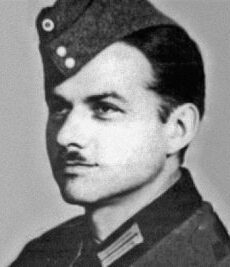
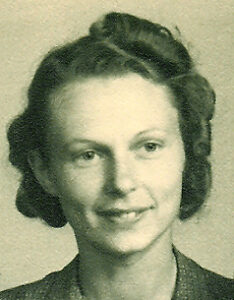 It seems highly unlikely that the United States would consider any of the German tactics from World War II to be useful or moral, but that is exactly what they thought of the Luftwaffe’s master interrogator, Hanns Scharff, whose interrogation tactic was…to be as nice as possible. Nice?? That word doesn’t really fit in with the picture most of us carry in our brain of the Nazi war machine. And even from what we see on television, interrogation is more of a verbally brutal assault on the senses, that breaks a person down so that they finally relent and give the interrogator the information they are asking for.
It seems highly unlikely that the United States would consider any of the German tactics from World War II to be useful or moral, but that is exactly what they thought of the Luftwaffe’s master interrogator, Hanns Scharff, whose interrogation tactic was…to be as nice as possible. Nice?? That word doesn’t really fit in with the picture most of us carry in our brain of the Nazi war machine. And even from what we see on television, interrogation is more of a verbally brutal assault on the senses, that breaks a person down so that they finally relent and give the interrogator the information they are asking for.
For getting information out of prisoners, Scharff’s best tactics included…nature walks without guards present, baking them homemade food, cracking jokes, drinking beers, and afternoon tea with German fighter aces. When I read that, I was totally stunned. Who would have ever considered such things to glean information out of a prisoner of war, or any kind of prisoner. Nevertheless, Scharff’s techniques were so successful that following World War II, the United States military incorporated his methods into their own interrogation schools.
Hanns-Joachim Gottlob Scharff was born on December 16, 1907 in Rastenburg, East Prussia, which is now K?trzyn, Poland, to Hans Hermann Scharf and Else Scharf (née Jahn). He was the second of three sons, the elder being Eberhardt and the younger, Wolfgang (who died in his teens). The last name was originally Scharf, but Hanns Scharff added an extra ‘f’ to the end of his last name as an adult, because some ancestors spelled their last names that way, and he thought it might be the correct spelling, which is something I have come across in my own family research as well.
Scharff was nicknamed the “Master Interrogator” of the Luftwaffe, and possibly of all Nazi Germany. he has also been praised for his contribution in shaping US interrogation techniques after the war. As an Obergefreiter…basically a Private First Class, he was charged with interrogating captured American fighter pilots, becoming an interrogation officer in 1943. He has been highly praised for the success of his techniques, in particular because he never used physical means to obtain the required information. Scharff’s interrogation techniques were so effective that he was occasionally called upon to assist other German interrogators in their questioning of bomber pilots and aircrews, including those crews and fighter pilots from countries other than the United States. Additionally, he was charged with questioning many more important prisoners who were funneled through the interrogation center, such as senior officers and famous fighter aces. I am not saying that because of this man’s techniques, all captured airmen gave up the information, just that what information they gave was not beaten out of them.
While training in the family business, and on a business trip to South Africa, Scharff met and married a South African British woman named Margaret Stokes. Margaret was the daughter of Captain Claud Stokes, first a pilot in Rhodesia in 1913, and later a squadron leader in the Royal Flying Corps. In 1939, the couple and their children went back to Germany for a vacation when WWII broke out. So now they were stuck. Scharff, was a German citizen, which put him in the army. While being drafted was not what they wanted, it did change who Scharff was…forever.
In 1948, Scharff was invited by the United States Air Force to give lectures on his interrogation techniques and first-hand experiences. The US military later incorporated his methods into its curriculum at its interrogation schools. Many of his methods are still taught in US Army interrogation schools. Scharff was granted immigration status. From the 1950s until his death on September 10, 1992, Scharff decided that he wanted to have a more gentle life, so he redirected his efforts to the creation of mosaics. He became a world-renowned 
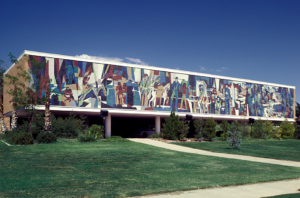 mosaic artisan, with his handiwork on display in locations worldwide, like the California State Capitol building; Los Angeles City Hall; several schools, colleges, and universities, including the giant Outdoor Mosaic Mural facade of the Dixie State College; Fine Arts Center; Epcot Center; and in the 15-foot arched mosaic walls featuring the story of Cinderella; Cinderella Castle; Walt Disney World, Florida.
mosaic artisan, with his handiwork on display in locations worldwide, like the California State Capitol building; Los Angeles City Hall; several schools, colleges, and universities, including the giant Outdoor Mosaic Mural facade of the Dixie State College; Fine Arts Center; Epcot Center; and in the 15-foot arched mosaic walls featuring the story of Cinderella; Cinderella Castle; Walt Disney World, Florida.
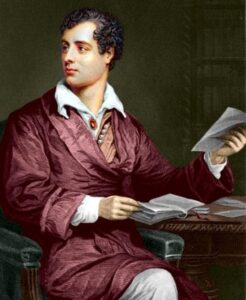 I think most of us have heard of the famous British poet and politician, Lord George Gordon Byron, who took his education at Trinity College in Cambridge…a college that boasts famous alumni, Prince Charles, Sir Isaac Newton, Lord Tennyson, King Edward VII, and King George VI, among many others. Lord Byron was well known for his romantic poetry, but he was also a rebel and would probably be considered a scoundrel.
I think most of us have heard of the famous British poet and politician, Lord George Gordon Byron, who took his education at Trinity College in Cambridge…a college that boasts famous alumni, Prince Charles, Sir Isaac Newton, Lord Tennyson, King Edward VII, and King George VI, among many others. Lord Byron was well known for his romantic poetry, but he was also a rebel and would probably be considered a scoundrel.
Trinity College has a strict rule for it’s attendees. No dogs were allowed to be kept in the dormitory, a rule that seriously upset Lord Byron, who had a dog that he really loved and wanted to bring to college with him. Most college campuses do not allow their residents to have pets, other than non-predatory fish, in the on-campus dorms. This is something most college students do not like or agree with, so Lord Byron was not alone in his annoyance. Lord Byron took things to a bit of the extreme, however, when it came to his rebellion, and I really don’t see how he got away with what he did. Lord Byron was known for being an avid animal lover, and when the college refused to allow him to bring his dog, he retaliated by bringing a pet bear in his dormitory!! I have no idea why the school didn’t put a stop to that, but they didn’t. He was even known to take it on walks with a leash!!
I have no idea why he wanted a bear, but if you think this is just a rumor, you are wrong. Lord Byron did indeed keep a pet bear, and not simply because he wanted to or he admired the strength of bears. He had a kind of symbolic or romantic reasoning for doing it. Lord Byron was quite devious, and his reason for having a pet bear at Trinity College was simply one of rebellion. He was known to say, “I have got a new friend, the finest in the world, a tame bear.”
Lord Byron was born in 1788 and throughout his life, he was constantly bucking norms. He had a tumultuous life from a very troubled childhood to being a literary icon by age 20. He was known for his indulgences, affairs, and many pranks which constantly got him in trouble. Nevertheless, even though he was always in the middle of a controversy and known bucking the norms, he also had a soft side for animals. In fact, he was a lifelong animal lover and kept countless dogs and cats throughout his troubled childhood. He even dabbled in exotic animals throughout his life like a monkey, a fox, peacocks, badgers, and a crocodile…and don’t forget the bear. Still, the pet he loved the most was his Newfoundland dog Boatswain? who died in 1808 from rabies. He loved the dog so much he wrote a poem dedicated to him entitled ?”Epitaph to a Dog?” and he even requested to be buried beside Boatswain in his will.
It seems that while Lord Byron was a poet by trade, he could have been a pretty good attorney…if the argument was something he cared about. The dog he had wanted to bring to Trinity College was a bulldog named Smut. As I said, he had a lot of pets. Since the college wouldn’t let him do as he chose, he went looking for loophole. It didn’t take him long to find what he was looking for…that there was no rule against having a tamed pet bear to the campus. So Byron argued with the college officials that he had every legal right to bring the bear. I don’t know if he was shocked, but I would be. Maybe the figured he was bluffing and didn’t really have a pet bear. If that was the case, they were very wrong, because he did, and he willingly produced it.
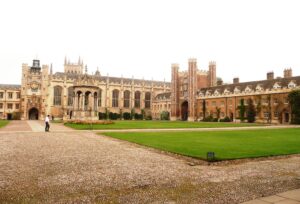
No one really knows where Lord Byron got the bear or what its name was, but he walked the bear on a chain as if it were a dog and would talk to it the way people talk to their pets. It was said that he allegedly wanted to have the bear apply as a student at the college since there were also no rules explicitly saying that bears cannot be students, but this may have been an example of Lord Byron’s sense of humor…or maybe he didn’t want to pay the tuition for a “student” who would not study or have any chance at passing. When he left school, he took the bear with him to London where it was free to roam the estate grounds. It was joined at the estate by Byron’s other pet…a wolf. Wow…just wow!!
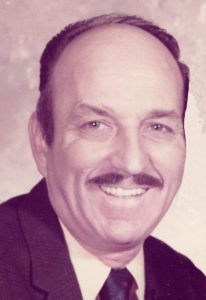
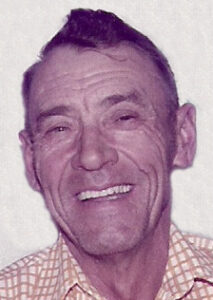 Since both my dad, Al Spencer and my father-in-law, Walt Schulenberg are in Heaven now (since 2007 and 2013), I often feel rather lonely on Father’s Day. Of course, I have my husband, Bob Schulenberg, who is the father of my children, Corrie Petersen and Amy Royce, and he is a great blessing to me. I also have my sons-in-law, Kevin Petersen and Travis Royce, who are the fathers of my grandchildren, Chris Petersen, Shai Royce, Caalab Royce, and Josh Petersen. And now my grandson, Chris also has two sweet children, Cambree and Caysen. I have been so greatly blessed in my lifetime with all of these wonderful people as well as the girlfriends of my grandsons, Karen, Chloe Foster, and Athena Ramirez. My family is growing and I couldn’t be happier.
Since both my dad, Al Spencer and my father-in-law, Walt Schulenberg are in Heaven now (since 2007 and 2013), I often feel rather lonely on Father’s Day. Of course, I have my husband, Bob Schulenberg, who is the father of my children, Corrie Petersen and Amy Royce, and he is a great blessing to me. I also have my sons-in-law, Kevin Petersen and Travis Royce, who are the fathers of my grandchildren, Chris Petersen, Shai Royce, Caalab Royce, and Josh Petersen. And now my grandson, Chris also has two sweet children, Cambree and Caysen. I have been so greatly blessed in my lifetime with all of these wonderful people as well as the girlfriends of my grandsons, Karen, Chloe Foster, and Athena Ramirez. My family is growing and I couldn’t be happier.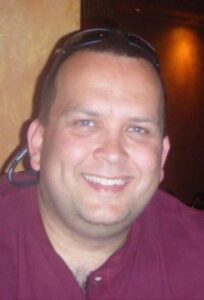
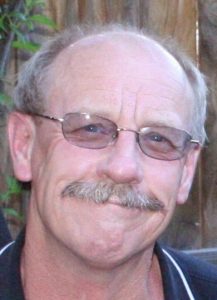
I have several fathers in my life. Not all of them are dads to my children, grandchildren, or great grandchildren. I have wonderful brothers-in-law, LJ Cook, Mike Reed, Mike Stevens, Chris Hadlock, Brian Cratty, and Ron Schulenberg, all of whom are very dear to me. I have nephews, who are also wonderful dads and also very dear to me…Dave Balcerzak, Dave Chase, Rob Masterson, Steve Spethman, Steve Moore, Josh Griffith, Sean Mortensen, Garrett Stevens, Jason Sawdon, Ryan Hadlock, Shannon Moore, Tim Thompson (who is a dad, and a boyfriend of my niece, Kellie Hadlock), Chris Killinger (who is a dad, and boyfriend of my niece, Lacey Stevens), Eric Parmely, Chris Iverson, Jake Harman, Kiefer Balcerzak, Dylan Herr. I am so 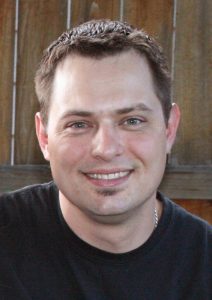
 proud of each and every one of these men. They are raising wonderful children, and that is a big deal. I am also proud of all of my uncles and cousins who are wonderful dads too.
proud of each and every one of these men. They are raising wonderful children, and that is a big deal. I am also proud of all of my uncles and cousins who are wonderful dads too.
Father’s Day is a day to honor our own dads and the many other dads in our circle of influence who are doing a wonderful job of training up their children in the way they should go. I am so proud of the way all of these men are raising their kids. All of them are sweet and wonderful kids, and of course, their mothers have played a huge part in that, but today is the day to honor the dads in our lives. I wish I could name and show them all, but there simply isn’t enough room. Happy Father’s Day to all the dads in my life and circle of influence.
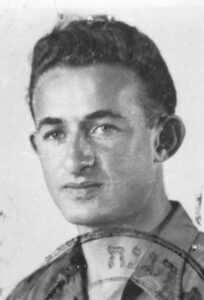 What would you do if your life had been ripped apart by a group of people who really knew nothing about you or your people, but hated you and them anyway. That was the position in which Joseph Harmatz found himself. Born in Rokiškis, Lithuania into a prosperous family, Harmatz and his family were transferred to the Vilnius Ghetto on January 23, 1925, after the occupation of Lithuania by Nazi Germany. It was the worst time in his life. His youngest brother and all of his grandparents were killed and his older brother died during a military action. His despondent father committed suicide. Harmatz was left alone with his mother at the age of 16. He couldn’t stand the way things were, so he left the ghetto through the sewers and joined a band of guerrillas fighting the Nazis. Harmatz managed to survive the Holocaust, and after the war, he became part of Nakam (Hebrew for Revenge) also known as the Avengers. The Nakam was a group of 50 former underground fighters led by Abba Kovner. Their goal was to avenge the deaths of the six million Jewish victims of Nazi extermination efforts in the Holocaust. The true goal according to Harmatz was to facilitate the death of as many Germans as possible, with the group planning “to kill six million Germans, one for every Jew slaughtered by the Germans,” acknowledging that the effort “was revenge, quite simply. Were we not entitled to our revenge, too?”
What would you do if your life had been ripped apart by a group of people who really knew nothing about you or your people, but hated you and them anyway. That was the position in which Joseph Harmatz found himself. Born in Rokiškis, Lithuania into a prosperous family, Harmatz and his family were transferred to the Vilnius Ghetto on January 23, 1925, after the occupation of Lithuania by Nazi Germany. It was the worst time in his life. His youngest brother and all of his grandparents were killed and his older brother died during a military action. His despondent father committed suicide. Harmatz was left alone with his mother at the age of 16. He couldn’t stand the way things were, so he left the ghetto through the sewers and joined a band of guerrillas fighting the Nazis. Harmatz managed to survive the Holocaust, and after the war, he became part of Nakam (Hebrew for Revenge) also known as the Avengers. The Nakam was a group of 50 former underground fighters led by Abba Kovner. Their goal was to avenge the deaths of the six million Jewish victims of Nazi extermination efforts in the Holocaust. The true goal according to Harmatz was to facilitate the death of as many Germans as possible, with the group planning “to kill six million Germans, one for every Jew slaughtered by the Germans,” acknowledging that the effort “was revenge, quite simply. Were we not entitled to our revenge, too?”
Their main target was Stalag XIII-D, a prisoner-of-war camp built on what had been the Nazi party rally grounds in Nuremberg. Interned in the camp were 12,000 members of the SS (Schutzstaffel or Protection Squads). These prisoners were involved in running concentration camps and other aspects of the Final 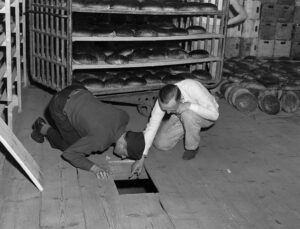 Solution…Nazi Germany’s horrific policy of deliberate and systematic genocide across German-occupied Europe. In April 1946, a member of the Nakam got a job as a baker, and he had a plan. He baked arsenic into 3,000 loaves of bread that were to be fed to the prisoners. Nearly 2,000 prisoners became ill and were thought to be seriously ill. American authorities thought that the arsenic had got onto the crust of the bread by accident, having been used as an insecticide in the wheat fields. During the investigation, United States Army investigators found enough arsenic to have killed 60,000 people and Nakam claimed they had killed several hundred victims, but declassified documents obtained by Associated Press in 2016 stated there were no casualties.
Solution…Nazi Germany’s horrific policy of deliberate and systematic genocide across German-occupied Europe. In April 1946, a member of the Nakam got a job as a baker, and he had a plan. He baked arsenic into 3,000 loaves of bread that were to be fed to the prisoners. Nearly 2,000 prisoners became ill and were thought to be seriously ill. American authorities thought that the arsenic had got onto the crust of the bread by accident, having been used as an insecticide in the wheat fields. During the investigation, United States Army investigators found enough arsenic to have killed 60,000 people and Nakam claimed they had killed several hundred victims, but declassified documents obtained by Associated Press in 2016 stated there were no casualties.
According to Harmatz’s son, his father had no regret for his attempts to kill the German prisoners. He said he was only “sorry that it didn’t work.” Harmatz wrote a book in 1998, called “From the Wings” in which he stated that the poisoning plot had the approval of Chaim Weizmann, though David Ben-Gurion and Zalman Shazar were both against the plan. An earlier attempt to poison the water in a number of German cities failed after 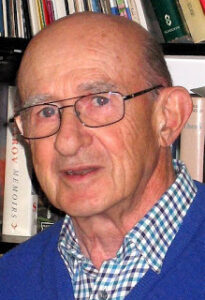 Kovner was arrested by British forces on a ship on which the poison had been hidden, and had been thrown overboard to prevent its capture. The group was so filled with hatred that they wanted all Germans killed, even if they had nothing to do with the Holocaust. Looking back, after much soul searching, Harmatz was thankful that the plot to poison the water supplies in German cities had failed, saying that it “would have harmed efforts to create an incipient State of Israel and would have led to charges of moral equivalence between actions of Germans and Jews. Another effort to kill Nazi war criminals on trial at Nuremberg failed when the group was unable to find any US Army guards willing to participate.”
Kovner was arrested by British forces on a ship on which the poison had been hidden, and had been thrown overboard to prevent its capture. The group was so filled with hatred that they wanted all Germans killed, even if they had nothing to do with the Holocaust. Looking back, after much soul searching, Harmatz was thankful that the plot to poison the water supplies in German cities had failed, saying that it “would have harmed efforts to create an incipient State of Israel and would have led to charges of moral equivalence between actions of Germans and Jews. Another effort to kill Nazi war criminals on trial at Nuremberg failed when the group was unable to find any US Army guards willing to participate.”
Harmatz emigrated to Israel in 1950, and worked to aid Jews resettling from countries around the world. He headed World ORT, a Jewish non-profit organization that promotes education and training in communities around the world, from 1960 to 1994. A long-time resident of Tel Aviv, Harmatz died at at his home on September 22, 2016. He was 91 years old, and was survived by two sons.
 On June 18, 1972, a Trident jetliner in perfect condition, crashed into the outskirts of the town of Staines, Surrey, England, after takeoff from Heathrow Airport in London, killing 118 people. The crash became known as the Staines air disaster. How could this happen? There was nothing wrong with the airplane. It was not shot down. It was not a terrorist attack or a hijacking and the official cause of the accident remains unknown. Nevertheless, something happened. The aircraft went into a deep stall in the third minute of its flight and crashed to the ground, narrowly missing a busy main road. The public inquiry principally blamed the captain for failing to maintain airspeed and configure the high-lift devices correctly. It also cited the captain’s heart condition and the limited experience of the co-pilot, while noting an unspecified “technical problem” that the crew apparently resolved before take-off.
On June 18, 1972, a Trident jetliner in perfect condition, crashed into the outskirts of the town of Staines, Surrey, England, after takeoff from Heathrow Airport in London, killing 118 people. The crash became known as the Staines air disaster. How could this happen? There was nothing wrong with the airplane. It was not shot down. It was not a terrorist attack or a hijacking and the official cause of the accident remains unknown. Nevertheless, something happened. The aircraft went into a deep stall in the third minute of its flight and crashed to the ground, narrowly missing a busy main road. The public inquiry principally blamed the captain for failing to maintain airspeed and configure the high-lift devices correctly. It also cited the captain’s heart condition and the limited experience of the co-pilot, while noting an unspecified “technical problem” that the crew apparently resolved before take-off.
The summer of 1972 brought with it, serious problems facing the air-travel industry. Pilots were threatening to strike any day due to lack of security. Hijackings were becoming more common every day, and pilots were often the target of the attacks during a hijacking, so they were feeling particularly vulnerable. Nevertheless, none of the feared causes seemed to be the reason for the crash.
Everything was running smoothly that day at Heathrow Airport outside of London. British European Airways morning flight number 548 to Brussels was full and weather conditions were perfect. The Trident 1 jet took off with no incident, then just after its wheels retracted, it began simply falling from the sky. On impact the plane split and an intense fireball from the plane’s fully loaded fuel supply exploded, scattering the fuselage and passengers. Of the 118 passengers and crew members on board, only two were pulled from the wreckage alive. Both of these died a short time later.
After a thorough investigation failed to produce any clear reason for the crash, or any real reason at all, the investigators were left with speculation. The investigators’ best guess concerning the cause of the crash was that the jet was either carrying too much weight or that the weight was improperly distributed and the plane could not handle the stress. The only possible clue to the probable cause of the crash happened at 3:36pm, when flight dispatcher J Coleman presented the load sheet to Captain Stanley Key whose request for engine  start clearance was granted three minutes later. Then, as the doors were about to close, Coleman asked Key to accommodate a BEA flight crew that had to collect a Merchantman aircraft from Brussels. The request was granted, but the additional weight of the three crew members necessitated the removal of a quantity of mail and freight from the Trident to ensure its total weight (less fuel) did not exceed the permitted maximum of 91,998 pounds. This was exceeded by 53 pounds, but as there had been considerable fuel burn-off between startup and takeoff, the total aircraft weight (including fuel) was within the maximum permitted take-off weight. So they assumed that everything was fine. There is still no confirmation that overloading was the problem, but it is the only thing that was questionable, and whatever the cause, it cost 118 people their lives that day.
start clearance was granted three minutes later. Then, as the doors were about to close, Coleman asked Key to accommodate a BEA flight crew that had to collect a Merchantman aircraft from Brussels. The request was granted, but the additional weight of the three crew members necessitated the removal of a quantity of mail and freight from the Trident to ensure its total weight (less fuel) did not exceed the permitted maximum of 91,998 pounds. This was exceeded by 53 pounds, but as there had been considerable fuel burn-off between startup and takeoff, the total aircraft weight (including fuel) was within the maximum permitted take-off weight. So they assumed that everything was fine. There is still no confirmation that overloading was the problem, but it is the only thing that was questionable, and whatever the cause, it cost 118 people their lives that day.
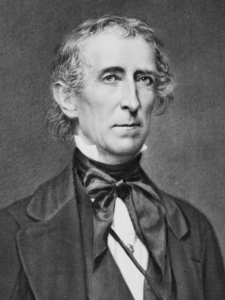 John Tyler, the tenth president of the United States, was born on March 29, 1790 in Virginia to John Tyler Sr and Mary Marot (Armistead) Tyler. He had two brothers and five sisters, but his mother died of a stroke in 1797 when John was seven years old. I can’t imagine how hard it was on young John to lose his mother. That wasn’t the only hard part of his youth. John was frail and sickly most his young life. Considering the start he had in life, it would not seem likely that John Tyler’s life would have amounted to much…but those who think that would be wrong.
John Tyler, the tenth president of the United States, was born on March 29, 1790 in Virginia to John Tyler Sr and Mary Marot (Armistead) Tyler. He had two brothers and five sisters, but his mother died of a stroke in 1797 when John was seven years old. I can’t imagine how hard it was on young John to lose his mother. That wasn’t the only hard part of his youth. John was frail and sickly most his young life. Considering the start he had in life, it would not seem likely that John Tyler’s life would have amounted to much…but those who think that would be wrong.
John Tyler came from a political family, and he was destined for the presidency. Tyler was admitted to the Virginia bar at the age of 19. He was actually too young to be eligible, but the admitting judge neglected to ask his age. By this time, his father was Governor of Virginia (1808–1811), and John Tyler Jr started a legal practice in Richmond, the state capital. In 1811, at just 21 years of age, Tyler was elected to represent Charles City County in the Virginia House of Delegates, an office he held for five successive one-year terms. As a state legislator, Tyler sat on the Courts and Justice Committee. Following the War of 1812, Tyler’s father died in 1813, and Tyler inherited thirteen slaves along with his father’s plantation. In 1816, he resigned his legislative seat to serve on the Governor’s Council of State, a group of eight advisers elected by the General Assembly. He then ran for the US House of Representatives, narrowly winning the election. Later he served in the US Senate, before being elected as Vice-President of the United States under William Henry Harrison. Harrison served from March 4, 1841 to his death on April 4, 1841, after which John Tyler took over serving until March 4, 1845.
You might think that Tyler’s political career was the defining point in his life, but he is actually known for something much more surprising. Tyler fathered more children than any other American president, but it isn’t even that fact that is so surprising. His first wife was Letitia Christian and together they had eight children, 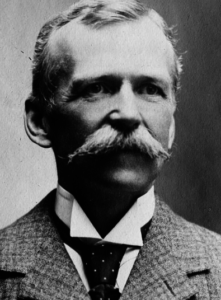 Mary (1815–1847), Robert (1816–1877), John (1819–1896), Letitia (1821–1907), Elizabeth (1823–1850), Anne (1825–1825), Alice (1827–1854) and Tazewell (1830–1874).. She died of a stroke while they lived in the White House in September 1842. He married again on June 26, 1844, to Julia Gardiner (July 23, 1820 – July 10, 1889), with whom he had seven children, David (1846–1927), John Alexander (1848–1883), Julia (1849–1871), Lachlan (1851–1902), Lyon (1853–1935), Robert Fitzwalter (1856–1927) and Pearl (1860–1947). Tyler’s son, Lyon was born when Tyler was 63 years, and while he was not his youngest child, it would be Lyon who would bring about the thing that really makes Tyler something special. Lyon would go on to father two sons of his own…one when he was 71 and one when he was 75. One of those sons, Harrison Ruffin Tyler is still alive, meaning that John Tyler, tenth president of the United States, who was born in 1790, has a grandson who is still alive in 2021. His older brother, Lyon Gardiner Tyler Jr passed away in September of 2020. The fact that their great grandfather was the tenth president, is unbelievable to the children of Lyon’s sons.
Mary (1815–1847), Robert (1816–1877), John (1819–1896), Letitia (1821–1907), Elizabeth (1823–1850), Anne (1825–1825), Alice (1827–1854) and Tazewell (1830–1874).. She died of a stroke while they lived in the White House in September 1842. He married again on June 26, 1844, to Julia Gardiner (July 23, 1820 – July 10, 1889), with whom he had seven children, David (1846–1927), John Alexander (1848–1883), Julia (1849–1871), Lachlan (1851–1902), Lyon (1853–1935), Robert Fitzwalter (1856–1927) and Pearl (1860–1947). Tyler’s son, Lyon was born when Tyler was 63 years, and while he was not his youngest child, it would be Lyon who would bring about the thing that really makes Tyler something special. Lyon would go on to father two sons of his own…one when he was 71 and one when he was 75. One of those sons, Harrison Ruffin Tyler is still alive, meaning that John Tyler, tenth president of the United States, who was born in 1790, has a grandson who is still alive in 2021. His older brother, Lyon Gardiner Tyler Jr passed away in September of 2020. The fact that their great grandfather was the tenth president, is unbelievable to the children of Lyon’s sons.

 A few days ago, my friends, Rikki and Tony Ramsey (who is stationed in Germany) and their three sons, Jameson, Jackson, and Jordan posted some pictures of a trip they took to Salzburg, Austria. On the way there, they went to a place in the mountains, and posted pictures of them in front of a large cross. It was the cross that caught my eye, but the story of the place that held my interest. In English the place is called the Eagle’s Nest, but in German it is the Kehlsteinhaus and it is a building and cross erected by the Third Reich atop the summit of the Kehlstein, a rocky outcrop that rises above Obersalzberg near the town of Berchtesgaden. This was not a church or a fancy mountain-top resort or restaurant…at least not then. It was used exclusively by members of the Nazi Party for government and social meetings, and was visited on 14 documented instances by Adolf Hitler, who disliked the location due to his fear of heights, the risk of bad weather, and the thin mountain air. Today, the building is owned by a charitable trust and is open seasonally to the public as a restaurant, beer garden, and tourist site. I’m sure Hitler would be furious about that.
A few days ago, my friends, Rikki and Tony Ramsey (who is stationed in Germany) and their three sons, Jameson, Jackson, and Jordan posted some pictures of a trip they took to Salzburg, Austria. On the way there, they went to a place in the mountains, and posted pictures of them in front of a large cross. It was the cross that caught my eye, but the story of the place that held my interest. In English the place is called the Eagle’s Nest, but in German it is the Kehlsteinhaus and it is a building and cross erected by the Third Reich atop the summit of the Kehlstein, a rocky outcrop that rises above Obersalzberg near the town of Berchtesgaden. This was not a church or a fancy mountain-top resort or restaurant…at least not then. It was used exclusively by members of the Nazi Party for government and social meetings, and was visited on 14 documented instances by Adolf Hitler, who disliked the location due to his fear of heights, the risk of bad weather, and the thin mountain air. Today, the building is owned by a charitable trust and is open seasonally to the public as a restaurant, beer garden, and tourist site. I’m sure Hitler would be furious about that.
The Kehlsteinhaus is located on a ridge atop the Kehlstein, a 6,017 feet subpeak of the Hoher Göll that rises above the town of Berchtesgaden. It construction was commissioned by Martin Bormann in the summer of 1937, and paid for by the Nazi Party. It took 13 months to complete, and whether is was the speed of its construction, or simply poor safety standards, twelve workers died during its construction. The road to Kehlsteinhaus is 13 feet wide and climbs 2,600 feet over 4 miles. To get to Kehlsteinhaus, the road goes through five tunnels and one hairpin turn. The road cost RM 30 million to build (about €150 million inflation-adjusted for 2007), which equals about 180,450,000 US dollars. Hitler’s birthday in April 1939 was considered a deadline for the project’s completion, so work continued throughout the winter of 1938, even at night with the worksite lit by searchlights. That explains the twelve deaths, I suppose.
Once you arrive, there is a large car park. From there, a 407 feet entry tunnel leads to an ornate elevator that ascends the final 407 feet to the building. Even the tunnel was elaborate. It was lined with marble and was originally heated, with warm air from an adjoining service tunnel. Most people walked into the elevator, but visiting high-officials were commonly driven through the tunnel to the elevator. Since the tunnel was to narrow to turn around, the driver then had to reverse the car for the entire length of the tunnel. The elevator was elaborate too, of course. The inside was surfaced with polished brass, Venetian mirrors, and green leather. The building’s main reception room is dominated by a fireplace of red Italian marble presented by Italian dictator Benito Mussolini, which was damaged by Allied soldiers chipping off pieces to take home as souvenirs. Hitler had the best of everything in the building. Unusual for 1937, the building had a completely electric appliance 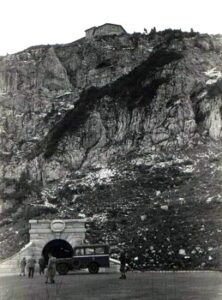
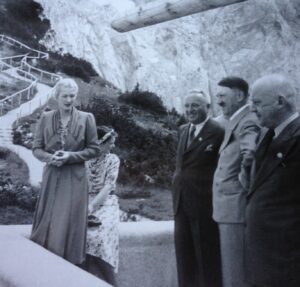 kitchen, but it was never used to cook meals…instead meals were prepared in town and taken to the kitchen on the mountain top to be reheated. Another extravagancy was the heated floors, with heating required for at least two days before visitors arrived. A MAN submarine diesel engine and an electrical generator were installed in an underground chamber close to the main entrance, to provide back-up power. Much of the furniture was designed by Paul László.
kitchen, but it was never used to cook meals…instead meals were prepared in town and taken to the kitchen on the mountain top to be reheated. Another extravagancy was the heated floors, with heating required for at least two days before visitors arrived. A MAN submarine diesel engine and an electrical generator were installed in an underground chamber close to the main entrance, to provide back-up power. Much of the furniture was designed by Paul László.
Hitler first visited on September 16, 1938, and returned to inaugurate it on April 20, 1939, his 50th birthday…though supposedly, it was not intended as a birthday gift. There are two ways to approach and enter the building…the road and the Kehlsteinhaus elevator. Hitler did not trust the elevator, continually expressed his reservations of its safety, and disliked using it. His biggest fear was that the elevator’s winch mechanism on the roof would attract a lightning strike. Bormann took great pains to never mention the two serious lightning strikes that occurred during construction. For a man who was supposedly such a “brave leader,” Hitler sure was afraid of a lot of things. The Kehlsteinhaus lies several miles directly above the Berghof, Hitler’s summer home. In a rare diplomatic engagement, Hitler received departing French ambassador André François-Poncet on October 18, 1938, there. It was he who actually came up with the name “Eagle’s Nest” for the building while later describing the visit. Since then, the name has remained. A wedding reception for Eva Braun’s sister Gretl was held there following her marriage to Hermann Fegelein on June 3, 1944. While Hitler more often than not left the entertaining duties to others, he believed the house presented an excellent opportunity to entertain important and impressionable guests. Often referred to as the “D-Haus,” short for “Diplomatic Reception House,” the Kehlsteinhaus is often combined with the teahouse on Mooslahnerkopf Hill near the Berghof, which Hitler walked to daily after lunch. Later, after the war, the teahouse was demolished by the Bavarian government, due to its connection to Hitler.
The Allies tried to bomb the Kehlsteinhaus in the April 25, 1945 Bombing of Obersalzberg, but the little house did not make an easy target for the force of 359 Avro Lancasters and 16 de Havilland Mosquitoes, which were sent to bomb Kehlsteinhaus, but instead, severely damaged the Berghof area. Undamaged in the April 25 bombing raid, the Kehlsteinhaus was subsequently used by the Allies as a military command post until 1960, when it was handed back to the State of Bavaria. The road to the Kehlsteinhaus has been closed to private vehicles since 1952 because it is too dangerous, but the house can be reached on foot (in two hours) from Obersalzberg, or by bus from the Documentation Center there. The Documentation Centre currently directs visitors to the coach station where tickets are purchased. The buses have special modifications to take on a 
 slight angle, as the steep road leading to the peak is too steep for regular vehicles. The Kehlsteinhaus itself does not mention much about its past, except in the photos displayed and described along the wall of the sun terrace that documents its pre-construction condition until now. The lower rooms of the structure are not part of the restaurant but can be visited with a guide. They offer views of the building’s past through plate-glass windows, including graffiti left by Allied troops that is still visible in the surrounding woodwork. The red Italian marble fireplace remains damaged by Allied souvenir hunters, though this was later halted by signage posted that the building was US government property, and damage to it was cause for disciplinary action. Hitler’s small study is now a storeroom for the cafeteria. Thanks to the Ramsey family for taking us along.
slight angle, as the steep road leading to the peak is too steep for regular vehicles. The Kehlsteinhaus itself does not mention much about its past, except in the photos displayed and described along the wall of the sun terrace that documents its pre-construction condition until now. The lower rooms of the structure are not part of the restaurant but can be visited with a guide. They offer views of the building’s past through plate-glass windows, including graffiti left by Allied troops that is still visible in the surrounding woodwork. The red Italian marble fireplace remains damaged by Allied souvenir hunters, though this was later halted by signage posted that the building was US government property, and damage to it was cause for disciplinary action. Hitler’s small study is now a storeroom for the cafeteria. Thanks to the Ramsey family for taking us along.
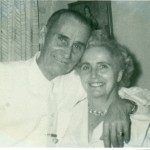
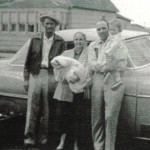 My grandfather, George Byer was the only grandfather I ever knew. My dad’s dad had passed away before my parents were married, and all of my great grandfathers passed away long before I was born. It was not something I ever felt cheated about then, it was just the way it was. Of course, now I wish I had been able to know the other grandfathers, as well as some of the grandmothers. I did get to know my grandpa’s mother, but I don’t recall my grandma’s mother, because I was only three when she passed away. Grandpa was such a gentle man and I loved him very much. We all did.
My grandfather, George Byer was the only grandfather I ever knew. My dad’s dad had passed away before my parents were married, and all of my great grandfathers passed away long before I was born. It was not something I ever felt cheated about then, it was just the way it was. Of course, now I wish I had been able to know the other grandfathers, as well as some of the grandmothers. I did get to know my grandpa’s mother, but I don’t recall my grandma’s mother, because I was only three when she passed away. Grandpa was such a gentle man and I loved him very much. We all did.
I remember one afternoon when Grandpa stopped by our house. My mom was on the phone, so she told her dad to just come on in. She went on with her conversation, and Grandpa stood there. When she realized that he hadn’t come in, She again motioned him to come on in. Again she went back to her conversation, and again, Grandpa stood there. Finally my mom realized that something was wrong. It was then that she saw our German Shepherd dog, King was standing at the door. He wasn’t exactly growling or anything, but Grandpa knew that he had better not come inside, because King was guarding the door. Mom said, “King!! You let him in!!” King looked at Mom sheepishly, and literally smiled. Mom said it was the first time she had ever seen a dog smile. King turned and stepped away, allowing my Grandpa to come inside. I really miss that dog!! And I really miss my grandpa. I’m sure that Grandpa got a kick out of the whole thing…later, but at the time, he knew better than to test the dog. The funny thing is that King really wouldn’t have hurt him. King really did have a sense of humor. Some dogs do, you know.
If you ask me, I had the very best grandpa in the world. He was the best and sweetest grandpa ever. All of his grandchildren loved him, and his kids always felt like they were given the very best life ever. Grandpa may not 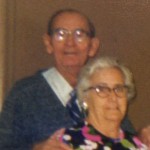
 have been rich, but he was rich in love for his family. He would have give everything he owned to make sure that they were ok. Together with our grandma, Hattie Byer they showed their generosity to anyone who needed it. No matter what Grandma was cooking, and how many extra people showed up, it seemed like there was always enough to feed everyone. They really were both amazing people. Today is the 128th anniversary of Grandpa’s birth. That was a wonderful day for our family, even if no one knew it then. Happy birthday in Heaven Grandpa Byer. We love and miss you very much.
have been rich, but he was rich in love for his family. He would have give everything he owned to make sure that they were ok. Together with our grandma, Hattie Byer they showed their generosity to anyone who needed it. No matter what Grandma was cooking, and how many extra people showed up, it seemed like there was always enough to feed everyone. They really were both amazing people. Today is the 128th anniversary of Grandpa’s birth. That was a wonderful day for our family, even if no one knew it then. Happy birthday in Heaven Grandpa Byer. We love and miss you very much.


 As a young man, my grand-nephew, James Renville wanted nothing more than to leave Wyoming and travel abroad. He thought he might want to live abroad too, or at least somewhere bigger than Wyoming. Covid-19 changed that in a big way, and lately, Wyoming isn’t looking so bad to him. In fact, he has developed an appreciation for his hometown and home state. With all the craziness and chaos going on everywhere else, James said that he realized how blessed he is to live in Wyoming where Covid didn’t touch him or leave him unemployed. In fact, the last year has been a year of change, soul searching, revelation, and really just finding out who James is and what he wants out of life. Everyone needs to have a time like that, and this year was just that for James…a year of growth and personal development. James also spent a lot of time with his dad, Jim Renville. They took the time to become best friends.
As a young man, my grand-nephew, James Renville wanted nothing more than to leave Wyoming and travel abroad. He thought he might want to live abroad too, or at least somewhere bigger than Wyoming. Covid-19 changed that in a big way, and lately, Wyoming isn’t looking so bad to him. In fact, he has developed an appreciation for his hometown and home state. With all the craziness and chaos going on everywhere else, James said that he realized how blessed he is to live in Wyoming where Covid didn’t touch him or leave him unemployed. In fact, the last year has been a year of change, soul searching, revelation, and really just finding out who James is and what he wants out of life. Everyone needs to have a time like that, and this year was just that for James…a year of growth and personal development. James also spent a lot of time with his dad, Jim Renville. They took the time to become best friends.
James isn’t a typical man in his twenties. He is more reserved, and a lot less the “wild and crazy” type of person that many people his age are. It’s not that James just wants to sit around doing nothing, and there is a bit of the “wild and crazy” in him too. That part of James comes out in his love of aggressive inline skating as 
 he calls it. I call it scary!! Anyway, James is really good at rollerblading…is that the same as inline skating? I think so. Yes, I’m told it is. He also enjoys running/jogging and playing pool. This last year has inspired James to some new beginnings too. James has decided to take up skiing and hiking. I wouldn’t ski, but hiking is my cup of tea, for sure.
he calls it. I call it scary!! Anyway, James is really good at rollerblading…is that the same as inline skating? I think so. Yes, I’m told it is. He also enjoys running/jogging and playing pool. This last year has inspired James to some new beginnings too. James has decided to take up skiing and hiking. I wouldn’t ski, but hiking is my cup of tea, for sure.
James has still done some traveling this past year, because there is a certain girl who has captured his heart, and the hearts of the whole family…Manuela Ortiz, who has been working in New Jersey. James and Manuela have been dating about two years, and while visiting her in New Jersey, James took her to Philadelphia where he popped the question, and she said “Yes,” so in October, they got engaged.
James’ mom, who is my niece, Toni Chase tells me that Manuela is a gift from God, and the icing on the cake of the last year. She is the a big part of the new beginning, but before James could see the gift that Manuela is, he has to seek his own happiness. You can only share your happiness when you are truly happy. This past year many people felt depressed, but James wouldn’t let that get to him. He shunned the depression that many people fought. As James made his journey to happiness, he discovered that while he was truly happy now, he didn’t want to continue the journey without Manuela by his side. They really do compliment each other and are very supportive of one another. James knew that Manuela was the one he wanted to walk the road ahead with 

 him. James was always a quiet man, but really he is selective about who he lets into his life, and that is a good thing. Once he knows a person, he isn’t quiet at all, but has good things to say, and much to contribute. Like many people, me included, James is not outgoing, but when he spots his people he knows them and he’s very down to earth. He is a great blessing to all who have the privilege of calling him their friend. Today is James’ birthday. Happy birthday James!! Have a great day!! We love you!!
him. James was always a quiet man, but really he is selective about who he lets into his life, and that is a good thing. Once he knows a person, he isn’t quiet at all, but has good things to say, and much to contribute. Like many people, me included, James is not outgoing, but when he spots his people he knows them and he’s very down to earth. He is a great blessing to all who have the privilege of calling him their friend. Today is James’ birthday. Happy birthday James!! Have a great day!! We love you!!

